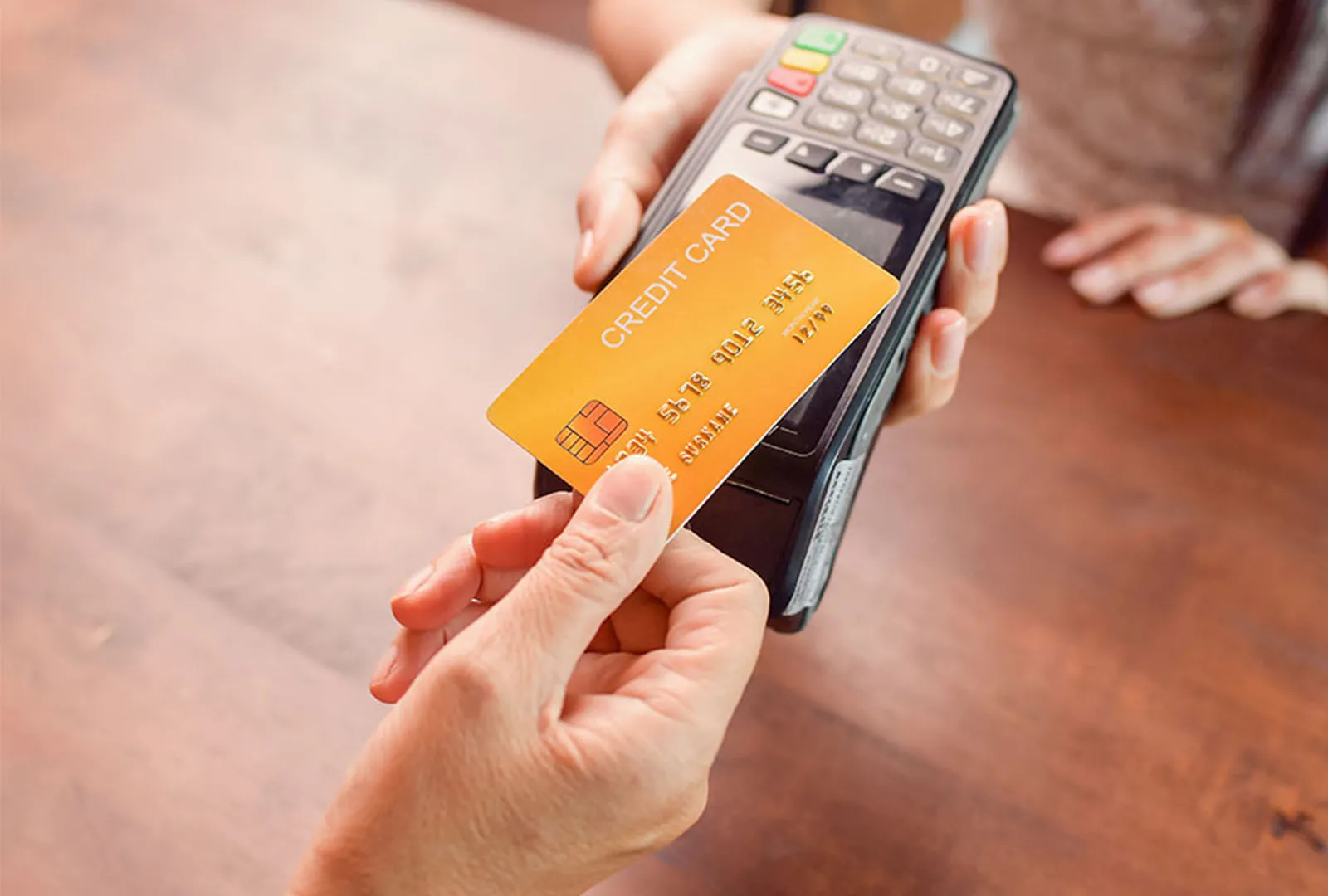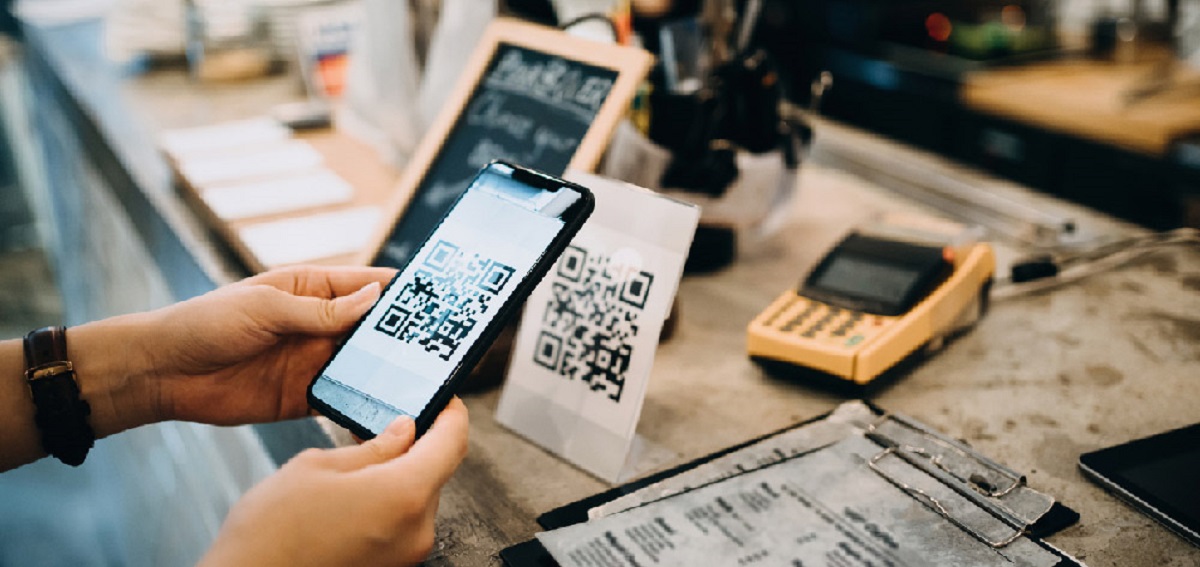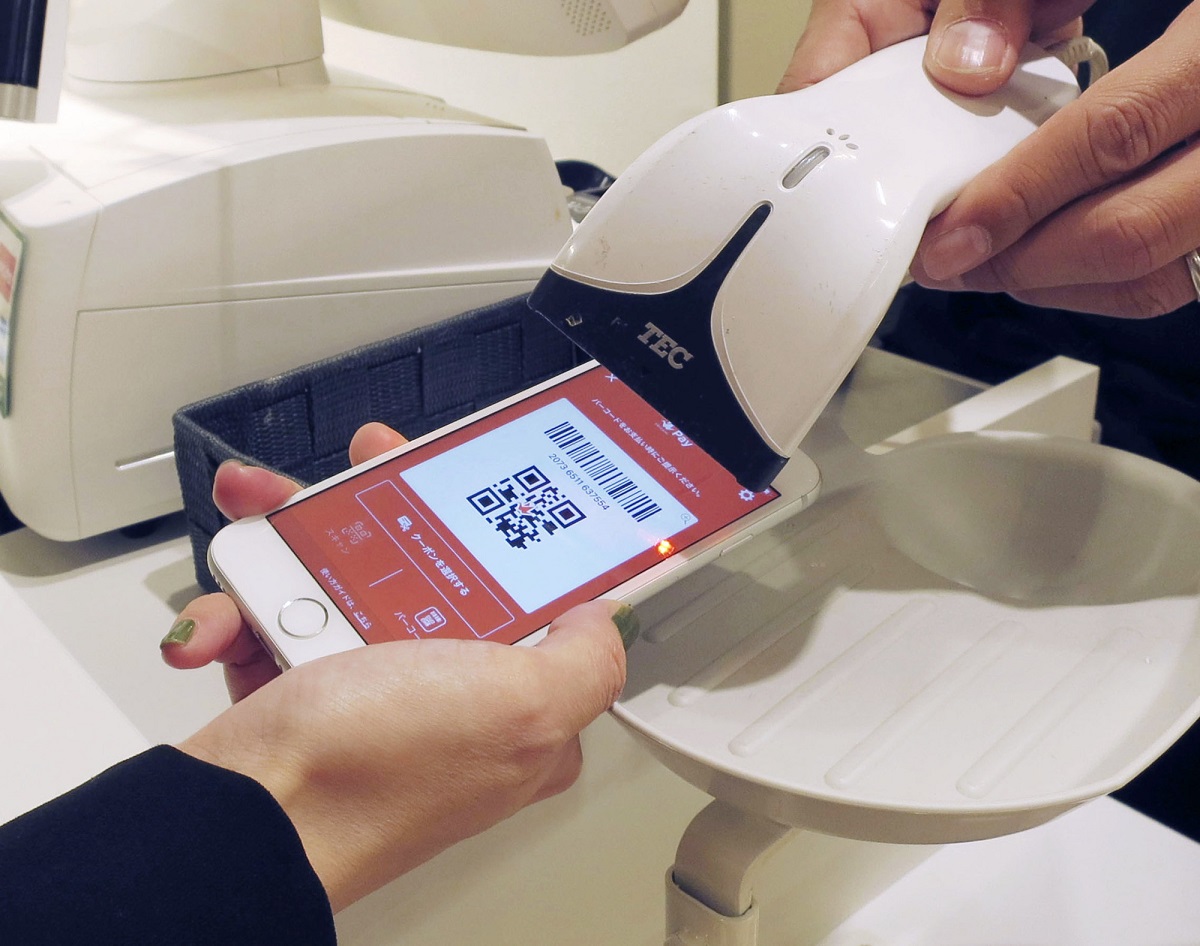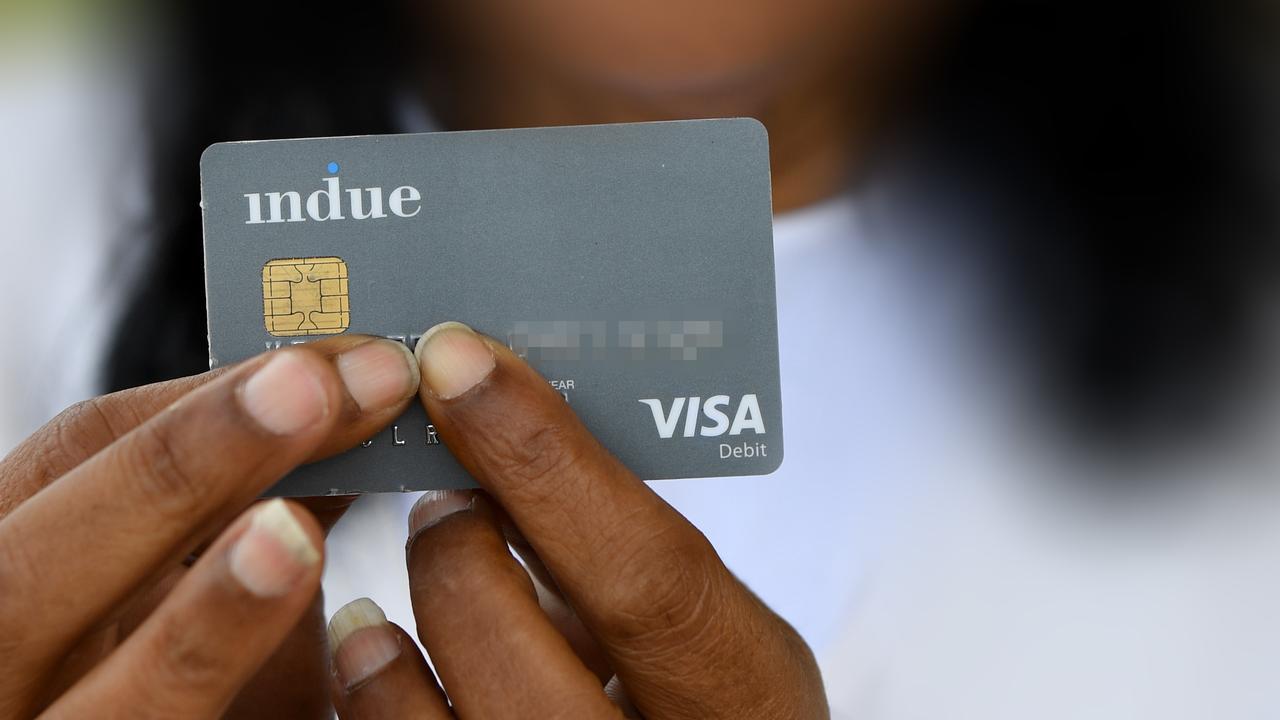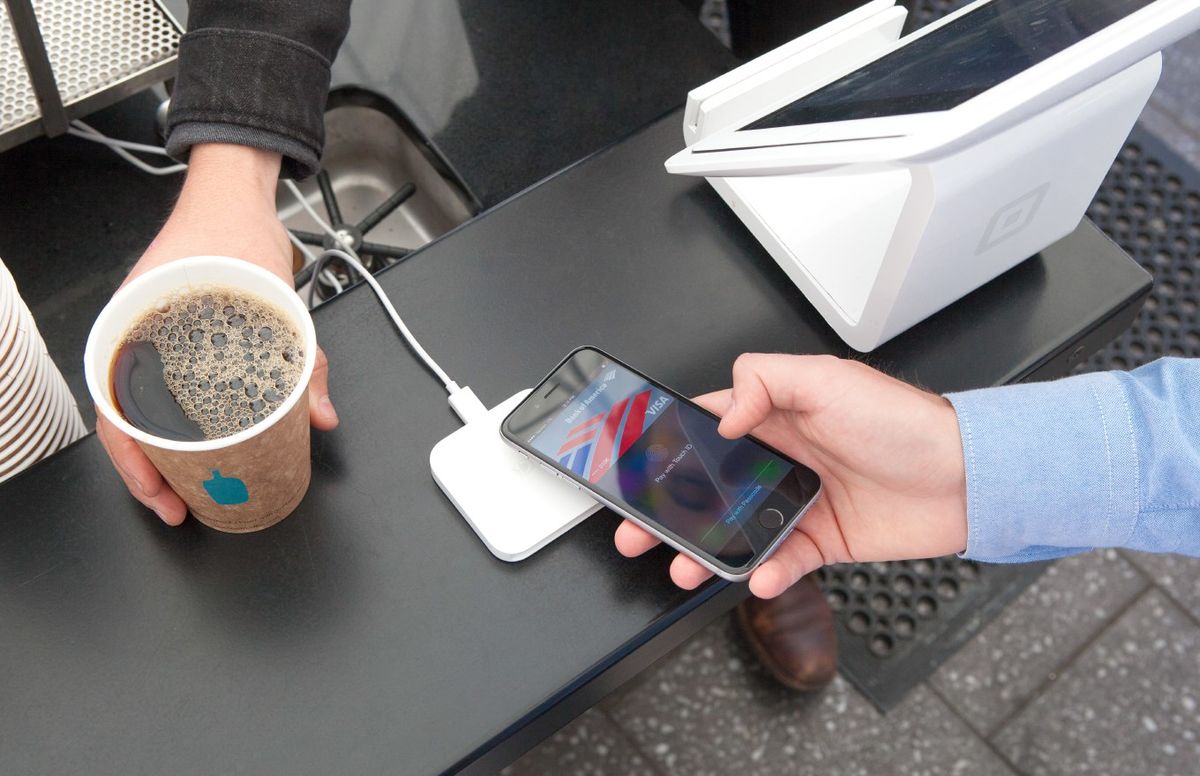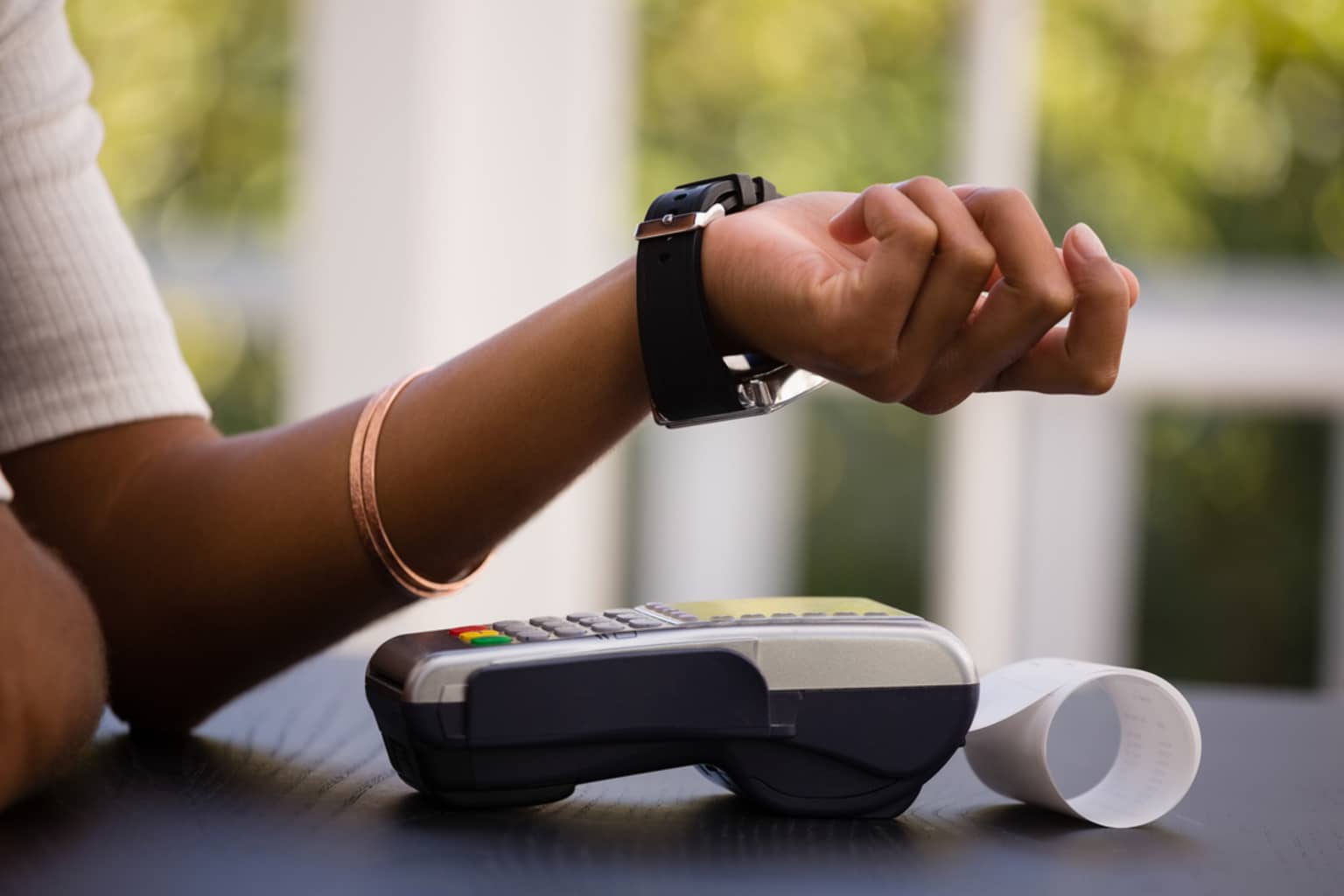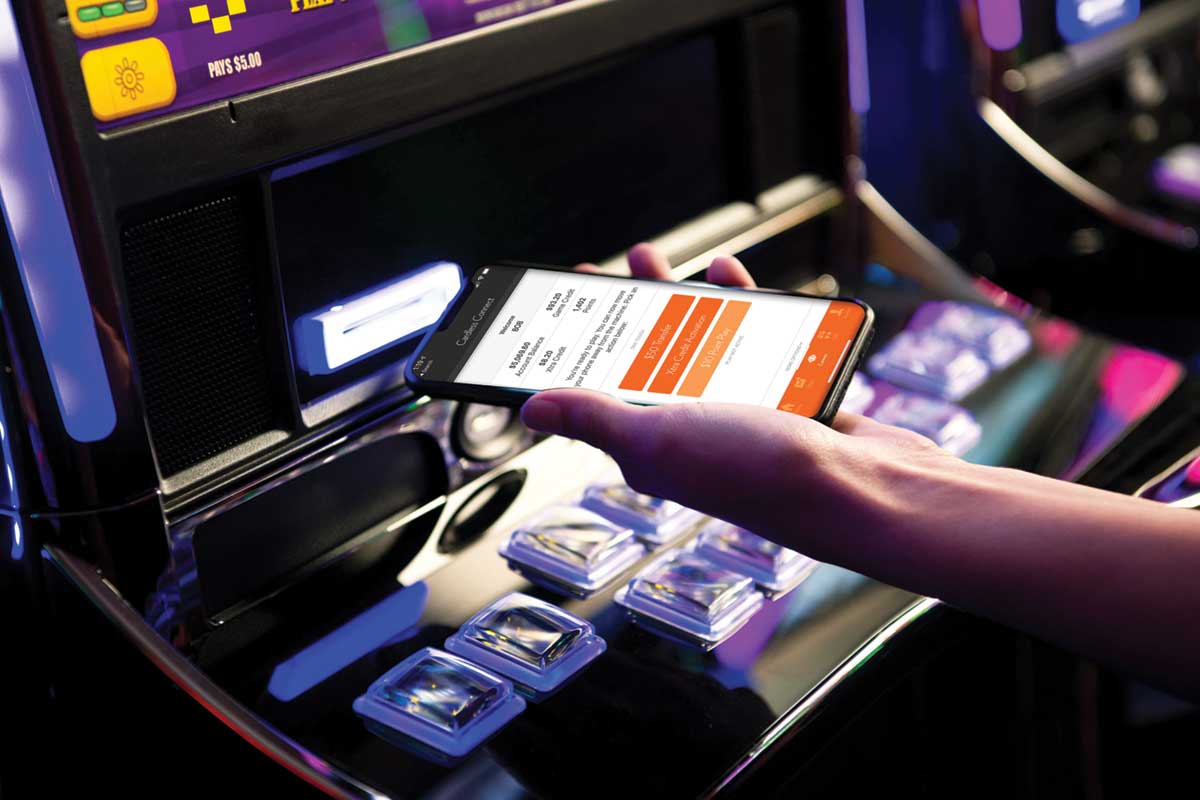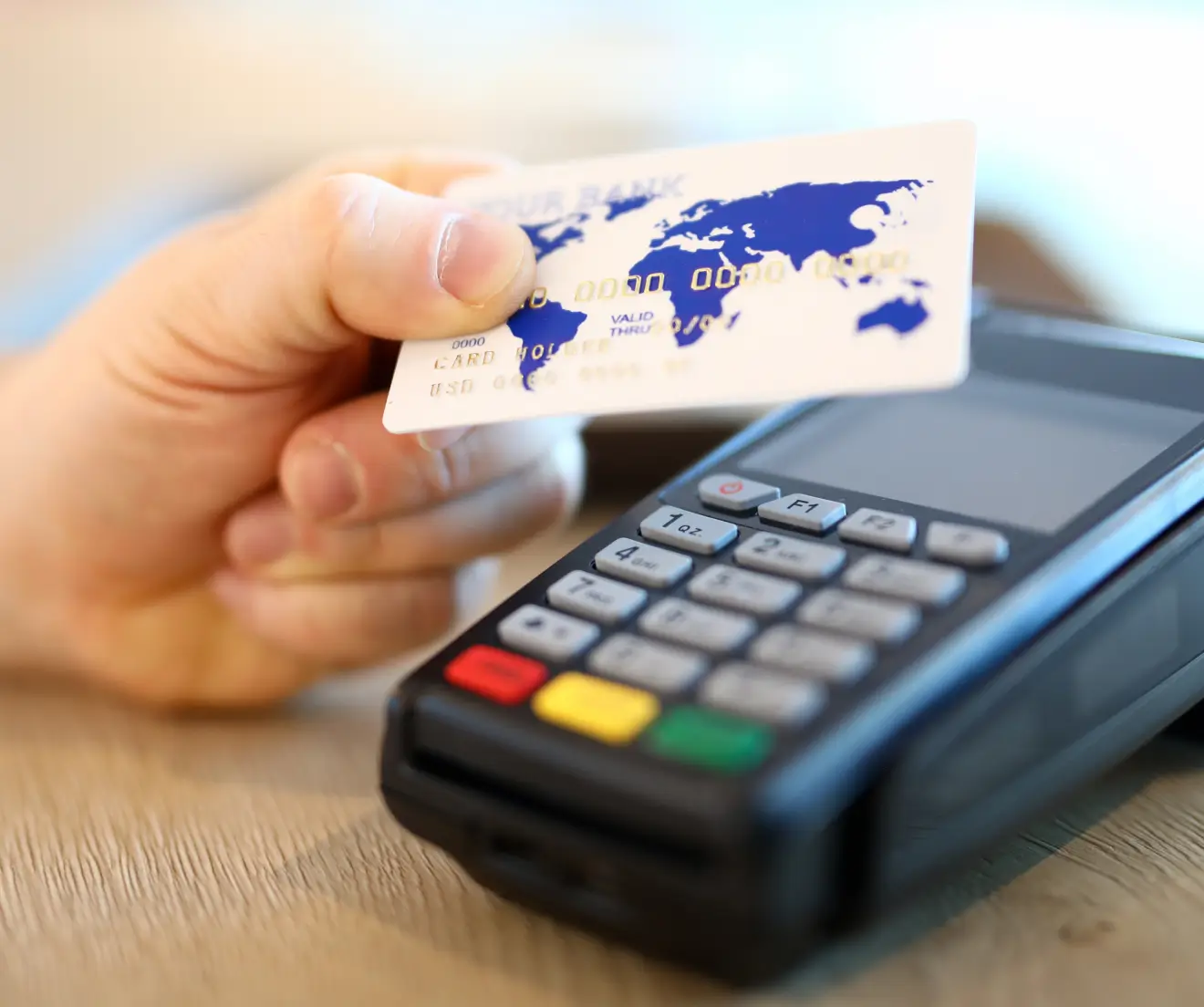Introduction
Welcome to the digital age where carrying cash is becoming increasingly less common. With the rise of technology and the convenience it offers, cashless transactions have become more prevalent, and one of the most popular methods of going cashless is through the use of cashless cards. These cards, also known as electronic payment cards or e-wallets, have revolutionized the way we make purchases and conduct financial transactions.
Cashless cards are electronic devices, typically in the form of a plastic card or a mobile application, that store and manage digital currency. They allow individuals to make payments or transfer funds without the need for physical cash. These cards are linked to a person’s bank account, credit card, or prepaid balance, providing a secure and convenient way to carry out transactions.
So, how exactly do cashless cards work? When a user wants to make a payment, they simply tap their card or use their mobile app to initiate the transaction. The card or app communicates with a payment terminal or another person’s device, transmitting the necessary information to complete the transaction. In some cases, a PIN number or biometric verification may be required for added security.
There are several advantages to using cashless cards. Firstly, they offer convenience. Carrying a single card or using your mobile app eliminates the need to carry multiple cards or rummage through your wallet for cash. Additionally, cashless cards provide a secure way to make transactions, as they often come with encryption and advanced security features to protect personal and financial information.
Moreover, cashless cards promote financial tracking and budgeting. Most cashless card providers offer detailed transaction history, allowing users to monitor their spending habits and identify areas where they can save. Some providers even offer personalized financial advice and budgeting tools to help users manage their finances effectively.
While cashless cards offer numerous benefits, there are a few disadvantages to consider. Firstly, not all merchants may accept cashless payments, especially in remote areas or small businesses. In such cases, having an alternative payment method is necessary. Additionally, there may be transaction fees associated with using cashless cards, depending on the provider and the type of transaction.
In the following sections, we will explore the different types of cashless cards, popular providers in the market, and the steps involved in obtaining one. We will also discuss the security measures implemented to protect users’ information and provide a comprehensive understanding of the world of cashless transactions.
Definition of Cashless Card
A cashless card, also known as an electronic payment card or e-wallet, is a digital payment tool that allows individuals to make purchases and conduct financial transactions without the need for physical cash. It is a convenient and secure alternative to traditional payment methods, such as carrying physical currency or using checks.
Essentially, a cashless card acts as a digital wallet, storing a user’s funds and facilitating transactions electronically. It can come in the form of a physical plastic card, similar to a credit or debit card, or as a mobile application that runs on smartphones or other smart devices.
One of the key features of a cashless card is that it is linked to a person’s bank account, credit card, or prepaid balance. This connection enables users to access their funds and make payments without the need for physical currency. When initiating a transaction, the card or mobile app communicates with a payment terminal or another person’s device, securely transmitting the necessary information to complete the transaction.
There are various types of cashless cards available, each offering different features and benefits. Some cards are limited to specific merchants or digital platforms, while others are widely accepted across a range of retailers and service providers.
It is important to note that a cashless card is not the same as a credit card or debit card, although they may share some similarities. While credit and debit cards primarily rely on the funds available in a bank account or a line of credit, a cashless card operates using preloaded funds or funds that are linked to the user’s bank account.
Overall, the definition of a cashless card centers around its ability to provide a digital and convenient way to make payments and conduct financial transactions. It eliminates the need for physical cash, reduces the risk of loss or theft, and offers a streamlined and efficient method of managing one’s finances.
How Cashless Cards Work
Cashless cards work by leveraging technology to facilitate electronic transactions and replace the need for physical cash. Whether in the form of a plastic card or a mobile application, these cards employ a series of steps to enable seamless and secure digital payments.
The first step in understanding how cashless cards work is the setup process. When a user obtains a cashless card, they are required to link it to their bank account, credit card, or prepaid balance. This linking establishes a connection between the card and the user’s funds, ensuring that there is a source from which payments can be deducted or topped up.
Once the card is set up, using it for a transaction is straightforward. To make a payment, the user simply needs to present their cashless card to a payment terminal or initiate the payment through a mobile app. The terminal or app communicates with the card and transmits the necessary information, such as the transaction amount and card details, to complete the transaction.
Depending on the type of cashless card, there may be additional layers of security. For example, some cards require the user to enter a Personal Identification Number (PIN) or provide biometric authentication, such as a fingerprint or facial recognition, to complete the transaction. These security measures ensure that only the authorized cardholder can make payments.
When the transaction is initiated, the cashless card platform verifies the availability of funds. If the user has enough funds or credit, the payment is authorized, and the amount is deducted from the account or balance linked to the card. This process typically occurs in real-time, providing instant confirmation of a successful payment transaction.
In cases where the linked account has insufficient funds, some cashless cards have the option to enable overdraft or credit features. This allows users to make payments even when their account balance is low, with the understanding that they will repay the overdraft or credit balance at a later date, often with associated fees or interest.
After each transaction, users can view their transaction history and account balance through their cashless card provider’s app or website. This feature provides transparency and allows users to monitor their spending, review past transactions, and manage their finances effectively.
It is worth mentioning that the exact workings of cashless cards may vary depending on the provider, type of card, and the technology used. However, the underlying principle remains the same: using technology to facilitate secure and convenient electronic payments, making cashless transactions a viable alternative to traditional payment methods.
Advantages of Using Cashless Cards
Cashless cards offer a range of benefits that make them an appealing choice for individuals looking for convenient and secure payment solutions. Here are some of the advantages of using cashless cards:
1. Convenience: One of the primary advantages of cashless cards is the convenience they provide. Carrying a single card or using a mobile app allows users to make payments without the need for physical cash or multiple cards. This streamlines the payment process and eliminates the hassle of searching for exact change or dealing with loose coins.
2. Security: Cashless cards offer enhanced security compared to carrying cash. With cash, there is always a risk of loss, theft, or misplacement. Cashless cards, on the other hand, require additional authentication in the form of PIN numbers or biometric verification, reducing the chances of unauthorized usage. Moreover, many cashless card providers implement advanced encryption and security measures to protect users’ personal and financial information.
3. Easy Tracking and Budgeting: Most cashless card providers offer detailed transaction history, allowing users to track their spending easily. This feature provides insights into spending patterns, enabling individuals to identify areas where they may be overspending or opportunities to save money. Some providers also offer budgeting tools or personalized financial advice, helping users manage their finances effectively.
4. Cashback and Rewards: Many cashless card providers offer cashback or reward programs as an incentive for usage. Users can earn a percentage of their spending back as cashback or accumulate points to redeem for discounts, gift cards, or other rewards. These programs enhance the overall value of using cashless cards and can result in savings or additional perks for users.
5. Wide Acceptance: Cashless cards are widely accepted in many establishments, including retail stores, restaurants, online platforms, and even public transportation systems. This broad acceptance ensures that users can make payments conveniently and effortlessly, regardless of their location or the type of purchase they are making.
6. Contactless Payment: Many cashless cards support contactless payment, allowing users to make transactions without physically swiping or inserting their card. This feature has become particularly relevant in today’s world, where contactless transactions help reduce the risk of spreading germs or viruses through physical contact with payment terminals.
Overall, cashless cards offer a multitude of advantages, including convenience, enhanced security, easy tracking of transactions, cashback rewards, broad acceptance, and the option for contactless payments. These benefits make cashless cards an excellent choice for individuals seeking a modern, efficient, and secure payment solution.
Disadvantages of Using Cashless Cards
While cashless cards offer numerous advantages, it is important to consider the potential disadvantages associated with their usage. Here are some of the drawbacks of using cashless cards:
1. Limited Acceptance: Despite the increasing prevalence of cashless transactions, not all merchants and establishments accept cashless payments. In some cases, especially in remote areas or small businesses, cash may still be the primary method of payment. This limitation can be inconvenient for individuals who rely solely on cashless cards and may require them to carry an alternative payment method.
2. Transaction Fees: Depending on the cashless card provider and the type of transactions, there may be transaction fees associated with using the card. These fees can add up over time and affect the overall cost-effectiveness of using cashless cards, especially for frequent or small-value transactions. It is important to consider and compare the fees charged by different providers to make an informed decision.
3. Dependency on Technology: Cashless cards rely heavily on technology, such as payment terminals, internet connectivity, and mobile apps. In cases where there are network outages or technical difficulties, users may experience disruptions in making payments. Additionally, if a user’s cashless card is lost or the associated mobile device malfunctions, access to funds for making transactions can be temporarily halted.
4. Potential for Overspending: The convenience of cashless cards can sometimes lead to unconscious overspending. Without the tangible nature of physical cash, it may be easier to lose track of expenditures, resulting in financial imbalance. Users need to be diligent in monitoring their spending and setting budgetary limits to avoid falling into the trap of impulsive or excessive spending.
5. Privacy Concerns: Cashless cards require users to link their personal and financial information to the card or mobile app. This data is susceptible to privacy breaches or unauthorized access if the card provider’s security measures are inadequate. Users should ensure that they choose reputable and trusted cashless card providers that prioritize data protection.
6. Potential for Fraud: While cashless cards typically have security measures in place, there is always a risk of fraud or unauthorized transactions. Cybercriminals may exploit vulnerabilities in the system or obtain a user’s card details through phishing scams or malware. Users should remain vigilant in monitoring their transactions and reporting any suspicious activity promptly.
Despite these disadvantages, cashless cards continue to gain popularity due to their numerous advantages. It is important for individuals to consider their own needs and circumstances, weigh the pros and cons, and make an informed decision about whether using a cashless card aligns with their financial goals and preferences.
Different Types of Cashless Cards
There are various types of cashless cards available in the market, each tailored to different needs and preferences. Understanding the different types can help individuals choose the one that best aligns with their financial requirements. Here are some of the most common types of cashless cards:
1. Debit Cards: Debit cards are one of the most popular types of cashless cards. They are typically issued by banks and are linked directly to the user’s checking or savings account. When a transaction is initiated, the funds are deducted directly from the linked account, making it a convenient and secure way to make payments.
2. Credit Cards: Credit cards differ from debit cards in that they allow users to make purchases on credit, up to a predetermined credit limit. Users are required to repay the borrowed amount, along with any applicable interest, within the billing cycle. Credit cards offer flexibility and can help build a credit history, but they require responsible usage to avoid debt accumulation.
3. Prepaid Cards: Prepaid cards function similarly to debit cards but require users to load funds onto the card before making purchases. Users can only spend the available balance on the card, making it a useful option for budgeting and controlling spending. Prepaid cards are convenient for individuals who do not have access to traditional banking services or prefer to limit their spending.
4. Mobile Payment Apps: Mobile payment apps, such as Apple Pay, Google Pay, and Samsung Pay, have gained popularity in recent years. These apps allow users to make payments directly from their smartphones by linking their cashless card or bank account to the app. Users simply need to tap their device at a payment terminal to complete the transaction, offering convenience and contactless payment options.
5. Stored Value Cards: Stored value cards, also known as gift cards or prepaid cards, are a type of cashless card that comes preloaded with a specific amount of funds. Users can make purchases using the available balance on the card until it is depleted. Stored value cards are commonly used for gifting or as a convenient alternative to carrying cash.
6. Loyalty Cards: Loyalty cards are a type of cashless card that rewards users for their repeated patronage. These cards are typically offered by specific retailers or businesses and provide users with discounts, points, or other incentives for making purchases. Loyalty cards encourage customer loyalty and can be linked to the user’s account to track reward points and redeem benefits.
It is important to note that the availability of these cashless card types may vary depending on the region and specific financial institutions. Additionally, some cashless cards may offer a combination of features, such as incorporating both debit and credit functionalities. Users should assess their individual needs and preferences to determine the most suitable type of cashless card for their financial requirements.
Popular Cashless Card Providers
The market for cashless cards has seen significant growth, with numerous providers offering their services to consumers. Here are some of the popular cashless card providers recognized for their widespread usage and innovative features:
1. Visa: Visa is one of the leading global payment technology companies, offering a range of cashless payment solutions. Visa cards are widely accepted worldwide, making them a convenient option for international travelers. Visa also provides contactless payment options and innovative features, such as tokenization, for enhanced security.
2. Mastercard: Mastercard is another prominent player in the cashless card market, offering a variety of debit and credit cards. Mastercard’s payment networks are accepted in over 200 countries, making it a reliable choice for both online and offline transactions. Mastercard also provides advanced security features, including biometric verification and fraud detection tools.
3. American Express: American Express, commonly referred to as Amex, is known for its premium cashless card offerings. Amex cards often come with exclusive perks, such as airport lounge access, travel rewards, and concierge services. American Express has a strong focus on customer service and is widely accepted at various merchants worldwide.
4. PayPal: PayPal is a popular digital payment platform that allows users to make cashless transactions online. With PayPal, users can link their cashless cards, bank accounts, or use their PayPal balance to make payments. PayPal provides a secure and frictionless online payment experience, making it a preferred choice for e-commerce transactions.
5. Apple Pay: Apple Pay is a mobile payment and digital wallet service offered by Apple. It allows users to make payments securely using their Apple devices, such as iPhones, iPads, and Apple Watches. Apple Pay supports contactless payments, offering convenience and added security through biometric authentication features like Face ID or Touch ID.
6. Google Pay: Google Pay, developed by Google, is a mobile payment platform that enables users to make cashless transactions using their smartphones. It supports contactless payments and can be used across various Android devices. Google Pay offers a simple and efficient way to make payments while also integrating loyalty programs and rewards.
These popular cashless card providers have earned their reputation through their commitment to security, user-friendly interfaces, and global acceptance. However, it’s important to note that the availability and features of these providers may vary depending on the specific region and the cooperation of local financial institutions.
When choosing a cashless card provider, individuals should consider factors such as the provider’s network coverage, security measures, transaction fees, customer support, and any additional benefits or rewards offered. Assessing these factors will ensure that users select a cashless card provider that caters to their specific needs and preferences.
How to Get a Cashless Card
Getting a cashless card is a relatively straightforward process, and the exact steps may vary depending on the provider and type of card. Here are the general steps involved in obtaining a cashless card:
1. Research: Start by researching different cashless card providers and the types of cards they offer. Consider factors such as features, fees, security measures, and the acceptance network. This will help you narrow down your options and find the card that best suits your needs.
2. Choose a Provider: Once you have identified a suitable cashless card provider, visit their website or contact their customer service to understand the application process and eligibility criteria. Some providers may require you to have an existing account with them, while others may accept applications from anyone.
3. Application: Fill out an application form provided by the cashless card provider. The form will typically require personal information, such as your name, contact details, and sometimes your social security number or identification information. You may also need to provide proof of address and income verification, depending on the provider’s requirements.
4. Verification: After submitting your application, the cashless card provider will review and verify the information provided. This may involve a credit check or other background checks to assess your eligibility for the card. The verification process can take anywhere from a few minutes to several days, depending on the provider.
5. Card Issuance: Once your application is approved, the cashless card provider will issue the cashless card to you. This can be in the form of a physical card that is mailed to your address or as a digital card that is accessible through a mobile app.
6. Activation: In some cases, you may need to activate your cashless card before it can be used. This can typically be done by following the instructions provided by the provider, whether it’s through a phone call, online activation, or using the mobile app. Activation is necessary to link the card to your account or designated funds.
7. Set Up: Once the cashless card is activated, you may need to set up additional features such as PIN numbers or biometric authentication, depending on the card’s security measures. This step helps ensure that only authorized users can access and use the card for transactions.
It is important to note that some providers may charge fees for card issuance, maintenance, or specific transactions. Familiarize yourself with the associated fees and terms and conditions of the cashless card to make an informed decision. Additionally, regular monitoring of your accounts and transactions is vital to safeguard against any unauthorized usage or potential fraud.
By following these steps and considering the requirements and features of various providers, you can successfully obtain a cashless card to enjoy the convenience and benefits of a digital payment solution.
Security Measures for Cashless Cards
Security is a top priority when it comes to cashless cards, and providers implement various measures to ensure the protection of users’ personal and financial information. Here are some common security measures employed by cashless card providers:
1. Encryption: Cashless card providers use encryption technology to secure the transmission of data during transactions. This ensures that sensitive information, such as card details and personal identification, is scrambled and can only be decrypted by authorized parties, effectively preventing unauthorized access or interception.
2. Tokenization: Tokenization is a method that replaces sensitive card information with unique identifiers, known as tokens. When a transaction is initiated, the actual card details are not transmitted. Instead, tokens are used to represent the card’s information, adding an extra layer of security. Even if the token is intercepted, it cannot be used for fraudulent purposes without the corresponding card information.
3. Two-Factor Authentication (2FA): Many cashless card providers implement two-factor authentication, requiring users to provide two different forms of identification before accessing their accounts or completing transactions. This can include a combination of something the user knows (e.g., a password or PIN) and something the user possesses (e.g., a mobile device or fingerprint).
4. Biometric Verification: Biometric verification, such as fingerprint or facial recognition, is increasingly being integrated into cashless card transactions to enhance security. By requiring a unique physical attribute for authentication, cashless cards further reduce the risk of unauthorized usage, as biometric characteristics are difficult to replicate.
5. Fraud Monitoring and Detection: Cashless card providers employ sophisticated algorithms and systems to monitor customer transactions and detect any suspicious or fraudulent activity. Unusual spending patterns, out-of-place transactions, or large withdrawals can trigger alerts, allowing the provider to take prompt measures to protect the cardholder’s account and funds.
6. Lost or Stolen Card Protection: In the event of a lost or stolen cashless card, most providers offer protection measures to prevent unauthorized usage. Users can swiftly report the loss to the provider, who will then block the card and prevent any further transactions. Some providers also offer zero-liability policies, ensuring that users are not held responsible for fraudulent charges.
7. Regular Software Updates: Cashless card providers prioritize the security of their systems by regularly updating their software and applications. These updates include security patches, bug fixes, and enhancements to protect against newly emerging threats and vulnerabilities.
It is essential for users to do their part in ensuring the security of their cashless cards. This includes setting strong and unique PINs or passwords, regularly reviewing transaction history for any discrepancies, and promptly reporting any suspicious activity to the card provider.
By implementing these security measures and promoting user awareness, cashless card providers aim to maintain the confidentiality, integrity, and availability of user data and transactions, instilling confidence in their customers to use cashless cards for their financial needs.
Conclusion
Cashless cards have transformed the way we make payments and conduct financial transactions. These convenient and secure digital payment tools offer numerous advantages, including convenience, enhanced security, easy tracking and budgeting, rewards, and wide acceptance. By leveraging technology, cashless cards provide a seamless and efficient way to carry out transactions without the need for physical cash.
However, it is important to consider the potential drawbacks of using cashless cards, such as limited acceptance, transaction fees, dependency on technology, potential for overspending, privacy concerns, and the risk of fraud. These factors should be carefully evaluated to determine the suitability of cashless cards for one’s financial needs.
When exploring the world of cashless cards, understanding the different types of cards available, popular providers in the market, how to obtain a card, and the security measures implemented becomes crucial. Conducting research, comparing features and fees, and considering individual preferences can help individuals make informed decisions about the most suitable cashless card for their lifestyle and financial goals.
While cashless cards continue to evolve and improve, it is essential for users to remain vigilant in monitoring their accounts and transactions, protecting their personal and financial information, and promptly reporting any suspicious activity.
With the ongoing shift towards a digital future, cashless cards are likely to play an increasingly significant role in our daily lives. Embracing these digital payment solutions can bring convenience, security, and efficiency to our transactions, simplifying our financial lives and adding value to our overall experience.







